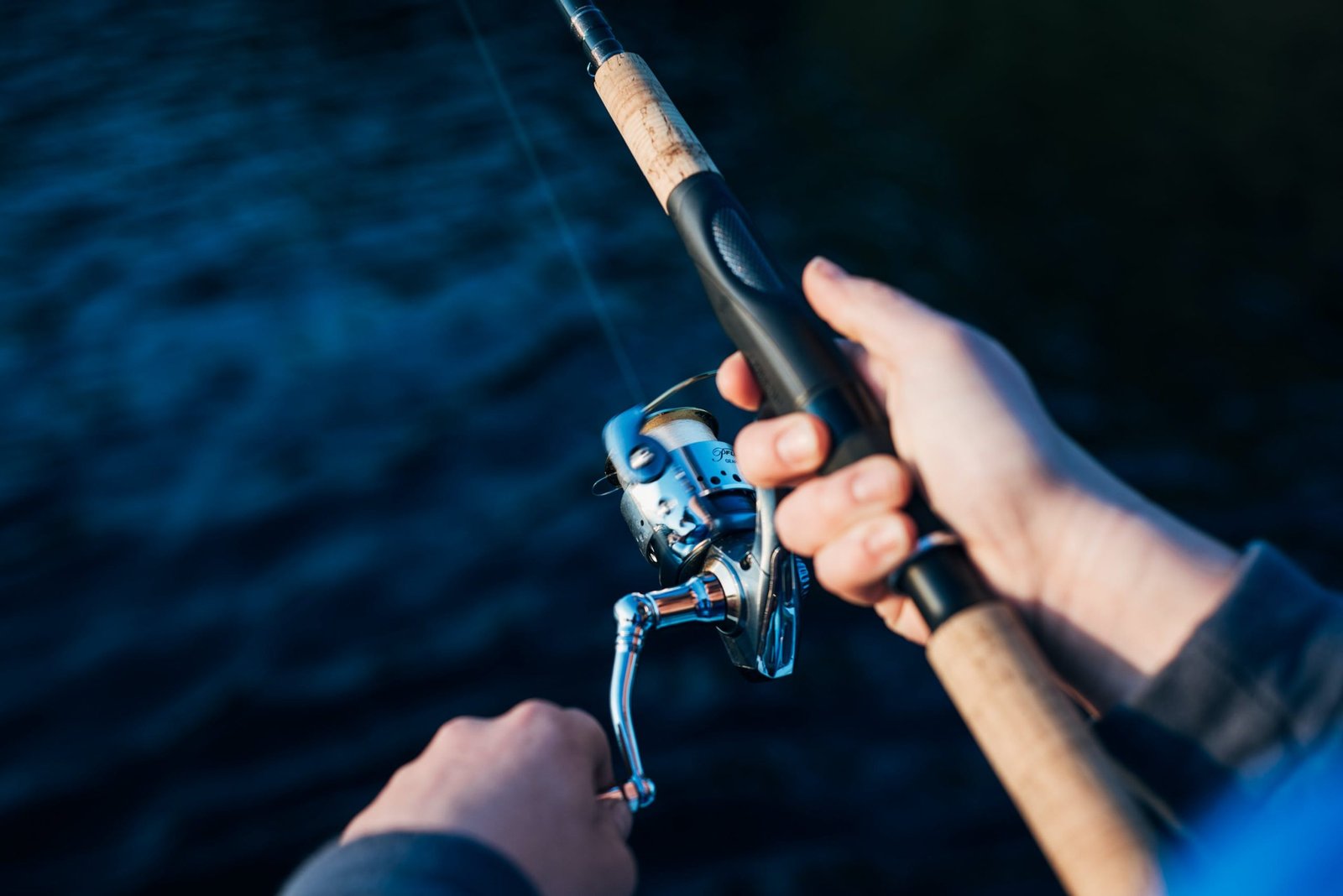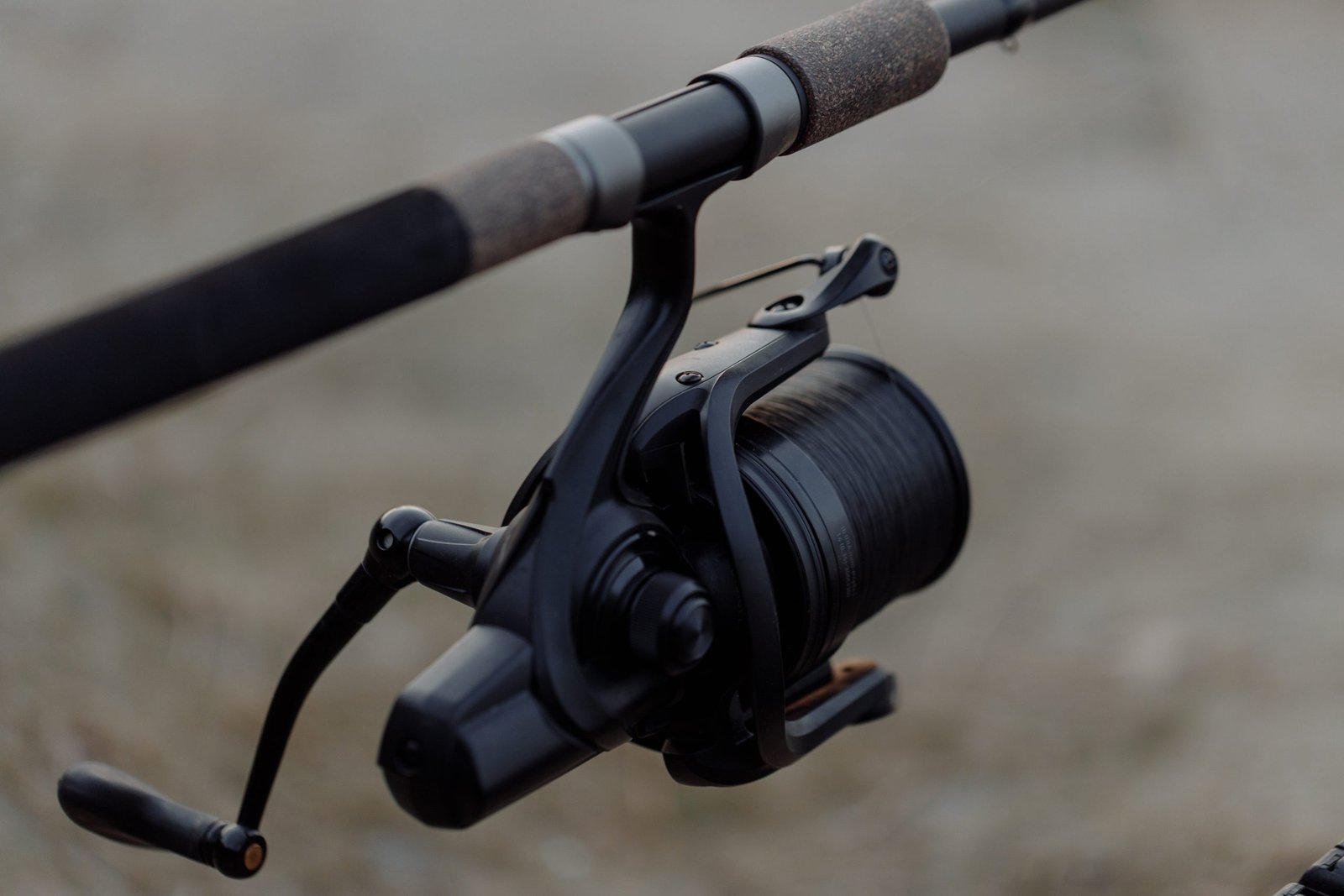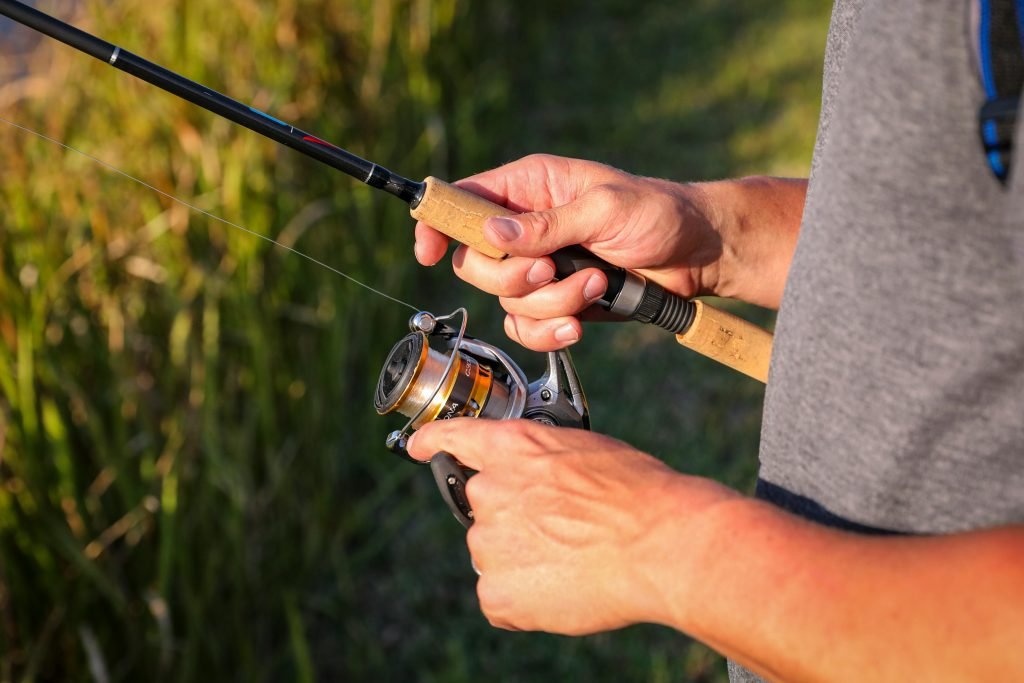
Choosing the best fishing reel as a beginner can be overwhelming with all the options out there. It’s important to find a reel that is easy to use, reliable, and versatile. A light, moderate retrieving reel is a great choice for starters because it can handle a wide range of fish species like Bluegill, Trout, and Bass. Size should be around 3000.
Spinning reels are often recommended for beginners due to their simple design and ease of use. They don’t require much practice to get the hang of, making them perfect for those new to fishing. Brands like Shimano and Pflueger are popular choices, offering durability and good performance without breaking the bank.
For those interested in trying different types of fishing, a baitcasting reel might be worth exploring once you get more comfortable. These reels offer better control and accuracy, making them ideal for targeting specific types of fish. After all, what bass angler doesn’t use baitcasters as main option for fishing?
Spinning Reels to Get Started
When it comes to starting out with fishing, the right spinning reel can make a big difference. Here are three great options that offer a mix of performance, durability, and ease of use.
Shimano Sedona FI

The Shimano Sedona FI is an excellent choice for beginners. Its Hagane Gear technology gives you smooth operation and great durability. This reel is also known for its G-Free Body, which moves the reel’s center of gravity closer to the rod. This makes it easier to handle, especially for newcomers.
You will appreciate its Propulsion Line Management system. This feature reduces the risk of backlashes and wind knots. It’s very helpful when you are just starting to learn casting techniques.
Check price on:
Pflueger President

The Pflueger President is well-regarded for its balance of affordability and quality. It has a graphite body and rotor, making it lightweight but sturdy. Beginners will find it comfortable to use for extended periods.
One standout feature is its 9-bearing system, which ensures smooth retrieves. The aluminum handle and soft-touch knob provide a secure grip. A key feature for novices is the instant anti-reverse bearing, which helps set the hook quickly and efficiently.
Check price on:
Daiwa Legalis

The Daiwa Legalis offers great value with its carbon light body construction. This makes the reel both strong and light. Its Air Rotor design is another perk. It evenly distributes stress, reducing the risk of reel damage over time.
One of the most user-friendly features is the Twist Buster II system. This stops line twist, a common problem for beginners. Additionally, the Digigear digital gear design ensures smooth and long-lasting performance.
Honestly one of the best bang for the buck reels. Despite its affordable price, it will last for years with proper care. You can use it in both saltwater and freshwater.
Check price on:
Baitcasters for Budding Anglers
When you’re starting with baitcasting reels, choosing models that offer ease of use and good performance is key. Here’s a look at three great options, including their main features and benefits.
Abu Garcia Max X
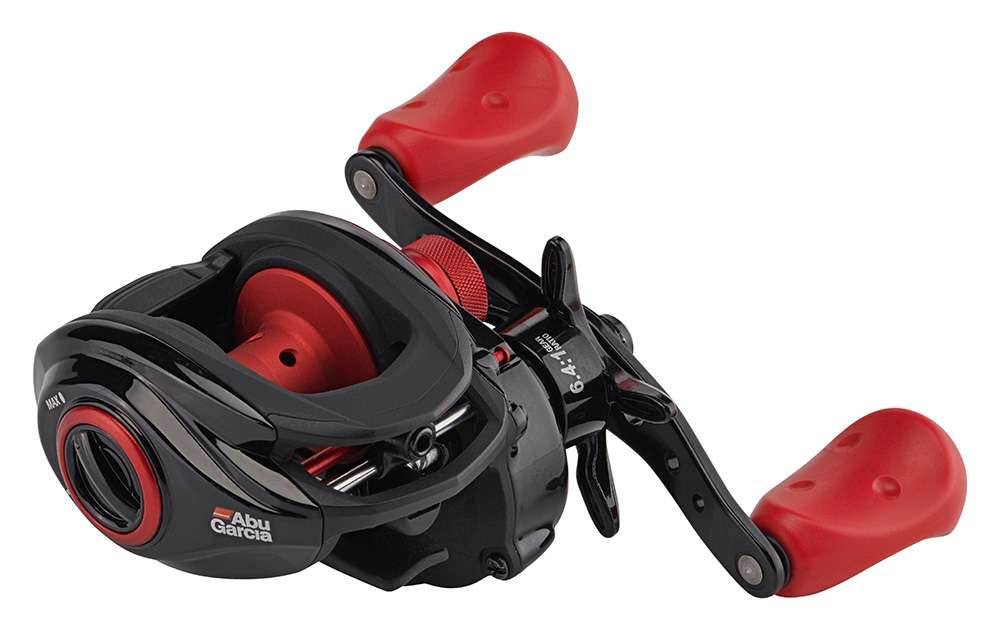
The Abu Garcia Max X is perfect for beginners. It boasts a low-profile design that makes it easy to handle and control. The reel includes a magnetic brake system, which helps you adjust your casts for better accuracy and fewer backlashes.
Its Duragear brass gears ensure smooth operation and long-lasting performance. With a lightweight graphite frame, it’s both durable and easy to manage. This reel is also budget-friendly, making it an excellent choice for those just starting out.
Check price on:
Shimano SLX 150 DC

The Shimano SLX 150 DC stands out because of its Digital Control system, an electronic braking system that automatically adjusts during casts. This cutting-edge technology helps reduce backlashes, which is especially helpful for beginners.
The reel is compact and has a solid feel due to its Hagane Body. It offers smooth performance with its 4+1 bearings and provides consistent casting distance and accuracy. Even though it incorporates advanced features, its intuitiveness makes it suitable for anglers still getting the hang of baitcasting.
Check price on:
Daiwa Fuego CT
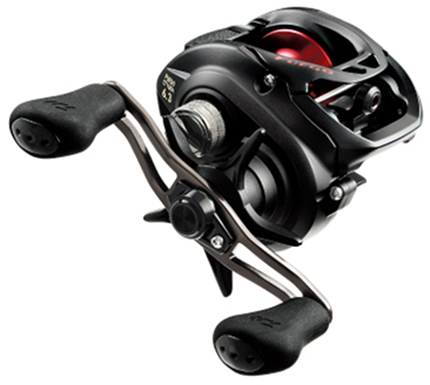
The Daiwa Fuego CT combines affordability with performance. It features the Magforce-Z cast control system, ensuring smooth and accurate casting. Its aluminum frame adds durability without making the reel too heavy.
The reel’s Ultimate Tournament Carbon Drag (UTD) system offers strong and consistent drag pressure. With its 6+1 bearing system, it provides smooth operation. This reel is straightforward to use, making it an ideal choice for new anglers who want a reliable and user-friendly baitcaster.
From now on, I’ll show you more about fishing reels in general and what to look for in one.
Understanding Fishing Reels: A Guide for Beginners

Choosing the right fishing reel can be overwhelming for beginners. It’s important to understand the different types of reels and their components to make an informed decision.
Types of Fishing Reels
Spinning Reels: These are the most popular among beginners. They are easy to use and versatile. You simply flip the bail, cast your line, and then close the bail to reel in. They work well for light tackle and are great for catching fish like trout, bass, and panfish.
Baitcasting Reels: These reels are more advanced and often used by experienced anglers. They offer better accuracy and control, ideal for targeting larger fish. However, they can be tricky to master and may cause line tangles if not handled properly.
Spincast Reels: These are closed-face reels and are very user-friendly, making them perfect for beginners and kids. You push a button to cast and release it to stop. This type of reel is good for small to medium fish.
Fly Reels: These reels are used in fly fishing, a method that utilizes artificial flies to catch fish. Fly reels are simpler in design and are made to hold the fly line and backing. They’re commonly used for catching trout and other freshwater species.
Components of a Fishing Reel
Drag System: The drag allows you to control the line’s resistance when a fish pulls on it. This is crucial for tiring out the fish and preventing the line from breaking.
Gear Ratio: This refers to the number of times the spool rotates with one turn of the handle. A higher gear ratio means you can reel in your line faster, which can be important for certain types of fishing.
| Gear Ratio | Description |
|---|---|
| Low | 4.0:1 to 5.4:1 (Good for power) |
| Medium | 6.0:1 to 6.4:1 (Balanced) |
| High | 7.0:1 and above (Fast retrieval) |
Handle: The handle should be comfortable to grip and easy to turn. A good handle makes it easier to fight fish.
Spool: The spool holds the fishing line. The material and size of the spool affect the reel’s performance and the amount of line it can hold.
Bail: This is a part of spinning reels that helps in casting and retrieving line. It guides the line back onto the spool.
Understanding these components and reel types will help you select the right fishing equipment, making your fishing experience more enjoyable.
Selecting the Perfect Fishing Reel Size and Weight
Choosing the right fishing reel size and weight can make your fishing experience much more enjoyable, especially if you’re just starting out. It’s important to match your reel to the type of fishing you plan to do and to ensure it’s lightweight for easier handling.
Size Matters for Beginners
As a beginner, you’ll want to start with a smaller reel. Reel sizes are generally numbered from 1000 to 10,000. For freshwater fishing and targeting smaller fish like bass or trout, a 2000 or 2500 size reel is a good starting point.
These sizes are perfect for ultralight lures and finesse fishing.
When choosing a reel, consider the type of fishing rod you’re using. For reels in the 2000-2500 size range, look for rods between 6ft to 7ft 6in with a line class rating between 2-5kg (5-10lb). This combination ensures better balance and handling.
Weight for Easy Handling
The weight of your fishing reel is crucial for maintaining comfort during extended fishing trips. Lightweight reels, typically made from materials like aluminum or carbon fiber, are easier to handle. They reduce fatigue, allowing you to fish longer without feeling tired.
When you’re just starting, a lightweight reel of about 6-9 ounces is suitable. This weight pairs well with different rod and reel combos, ensuring you don’t strain your wrists or arms. Remember, while heavier reels can offer more durability, they are harder to manage when you’re still learning the basics.
Opting for a lighter reel ensures you can focus more on developing your technique and less on managing the equipment.
Reel Durability and Construction Materials

When looking for a fishing reel that lasts, pay attention to the materials used and how they protect against rust and corrosion. These aspects are crucial for ensuring your reel performs well and has a long life.
Materials for Longevity
Fishing reels crafted from quality materials like aluminum and magnesium stand out for their durability. An aluminum spool offers strength while keeping the reel lightweight. Magnesium bodies are also favored for being robust yet light, which is important for easy handling over long fishing sessions.
Polymer and graphite are also common in reel construction. These materials might not be as strong as aluminum or magnesium, but they are lightweight and generally more affordable. They are good options for beginners who might be looking for a balance between price and performance.
Anti-Corrosion Properties
Fishing often exposes your gear to water, and rust is a common enemy. Look for reels with anti-corrosion treatments, especially if you plan to use them in saltwater. Anodized aluminum or stainless steel components can resist rust and extend the lifespan of your reel.
Many modern reels have sealed bearings or a sealed drag system. These features keep water and dirt out, preventing corrosion from taking hold inside your reel. Even if you’re fishing in freshwater, these anti-corrosion properties can help maintain smooth operation and ensure your investment lasts.
Performance Features to Look For
When choosing a fishing reel, several performance features can greatly impact your fishing experience. Understanding these features will help you select a reel that best suits your needs and enhances your time on the water.
Drag Systems
The drag system is crucial for controlling the tension on the fishing line. It allows you to let the line slip out with resistance when a fish pulls hard. Look for drag systems that are smooth and easy to adjust.
- High-quality drag systems help lessen line breakage.
- Front drag systems are more durable.
- Rear drag systems are easier to adjust quickly.
You want a drag system that offers a balance of strength and smoothness, ensuring that sudden pulls by a fish won’t snap your line or damage your reel.
Ball Bearings and Gear Ratio
Ball bearings inside a reel influence its smoothness and overall performance. More ball bearings typically mean smoother operation.
- Aim for a reel with at least 5 ball bearings for good performance.
- Stainless steel bearings resist corrosion and are more durable.
Gear ratio refers to how many times the spool (the part that holds the line) turns with each handle crank. A higher gear ratio (e.g., 7:1) means faster line retrieval. For beginners, a gear ratio between 5:1 and 6:1 offers a good balance between speed and power, making it versatile for different fishing situations.
Spool Capacity and Line Management
Spool capacity refers to how much fishing line a reel can hold. This is important for both casting distance and handling fish that may run far.
- Large spool capacity is beneficial for deep water fishing.
- Line capacity will be marked on the reel, helping you choose the right fit.
Line management features help in preventing line tangles and ensure smoother casting. Look for reels with line rollers and line guides designed to manage the line slickly. These features reduce friction and help in efficiently laying the line on the spool during retrieval, preventing common issues like line twisting or snarling.
Frequently Asked Questions
As you start your fishing journey, you’ll probably have a lot of questions about which reels to choose. Below, you’ll find answers to some common questions to help you get started.
What are the most user-friendly fishing reels for new anglers?
For new anglers, spincast reels and spinning reels are usually the easiest to handle. Spincast reels are known for their simple design and easy use, making them perfect for beginners. Spinning reels offer more versatility and are slightly more advanced but still beginner-friendly.
How do I choose a suitable spinning reel when I’m just starting out in fishing?
Look for a spinning reel that has a smooth drag system and is lightweight. Pay attention to the reel’s material; graphite makes it light and easy to manage. Consider the reel size as well, with smaller sizes being easier to handle for beginners.
What features should I look for in a spincast reel as a beginner?
A good spincast reel should have an enclosed design to prevent tangles, making casting easier. Check for a reliable drag system and a comfortable handle. An easy push-button mechanism is also a plus for smooth casting.
Can you suggest some affordable fishing reels for someone new to the sport?
Ugly Stik GX2 Spinning Combo and Zebco Roam Spincast Reel are great choices for beginners. They offer good quality and ease of use at a reasonable price. Also, PENN Battle II 4000 provides great value with durable construction and solid performance.
What’s the difference between the main types of fishing reels available?
Spincast reels are the simplest, with a push-button for casting. Spinning reels are open-faced and offer more control. Baitcasting reels provide high precision but are more challenging to master. Each type suits different fishing styles and skill levels.
How do I select the right fishing reel for catching bass as a beginner?
Choose a spinning reel or baitcasting reel with a good drag system and a medium to heavy power rating. Look for durability and sensitivity in the rod and reel combo, like those made from graphite. These features help you handle the strength and fight of bass.


